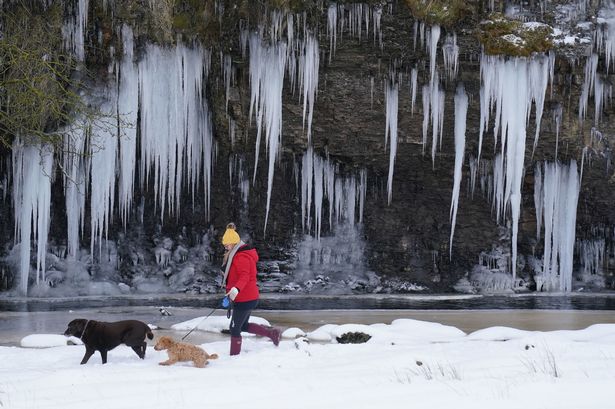The prospect of a late-winter snowfall hangs over millions of Britons as meteorological forecasts hint at a potential shift towards colder temperatures later this month. While the immediate future promises a relatively mild spell, long-range weather models, such as those from WXCharts, suggest a growing possibility of snow returning to parts of the UK. This anticipated change comes after a period of fluctuating conditions, oscillating between milder spells and brief bursts of wintery weather. The Met Office, the UK’s national weather service, has also acknowledged the potential for a colder snap, suggesting that snow showers could accompany the drop in temperatures. This potential return to wintery conditions underscores the unpredictable nature of British weather, particularly during the transitional periods between seasons.
The evolving weather patterns, as depicted by WXCharts, indicate the potential for significant snowfall across various regions of the UK. While the exact locations and intensity of snowfall remain uncertain, the models suggest a widespread impact, potentially affecting both northern and southern regions. This projected snowfall arrives amid growing concerns regarding the potential disruptions it could cause, impacting transportation networks, daily commutes, and potentially even power supplies. Furthermore, the anticipated colder spell raises concerns about the vulnerability of vulnerable populations, including the elderly and individuals experiencing homelessness, who face increased risks during periods of extreme cold. Authorities and support organizations are likely to begin preparing contingency plans to mitigate the potential impact of these adverse weather conditions.
The Met Office, in its long-range forecast, has echoed the predictions from independent weather models, acknowledging the increasing likelihood of a colder period towards the end of the month. This shift towards colder conditions is attributed to changes in atmospheric circulation patterns, potentially bringing in colder air masses from northern or eastern Europe. While the Met Office refrains from providing precise details regarding snowfall accumulation or specific locations, their acknowledgment of the potential for snow showers adds weight to the predictions from WXCharts. This convergence of forecasts from different sources reinforces the growing expectation of a return to wintery conditions, prompting individuals and communities to prepare for potential disruptions.
The potential for widespread snowfall later this month raises several critical considerations, particularly regarding the potential impact on infrastructure and daily life. Transportation networks, including roads, railways, and airports, are particularly susceptible to disruption during heavy snowfall, leading to delays, cancellations, and potentially even strandings. The anticipated colder spell also necessitates preparations for potential power outages, as increased demand for heating can strain power grids. Furthermore, the health and well-being of vulnerable populations become a significant concern during periods of extreme cold, requiring targeted support and assistance from local authorities and community organizations. The potential for these combined challenges necessitates proactive planning and preparedness to minimize disruptions and ensure the safety and well-being of all members of the community.
In light of the evolving weather forecasts, it is crucial for individuals and communities to take proactive steps to prepare for the potential impact of snowfall and colder temperatures. This includes ensuring adequate supplies of essential items, such as food, water, and medications, in case of travel disruptions or power outages. Checking on vulnerable neighbors and family members is also essential, particularly those who may require assistance with heating or other essential services. Preparing vehicles for winter conditions, including checking tire pressure and antifreeze levels, is crucial for ensuring safe travel. Staying informed about weather updates and potential travel advisories is equally important, enabling individuals to make informed decisions about travel plans and daily activities.
The potential for substantial snowfall later this month serves as a reminder of the inherent unpredictability of British weather and the importance of preparedness. While the exact timing and intensity of the anticipated snowfall remain uncertain, the convergence of forecasts from different sources suggests a growing likelihood of a return to wintery conditions. By taking proactive steps to prepare for the potential impacts, individuals and communities can mitigate disruptions and ensure their safety and well-being during this anticipated period of adverse weather. Staying informed about weather updates and heeding advice from relevant authorities will be crucial in navigating the challenges that may arise. This proactive approach will help minimize the potential disruptions and ensure a smoother transition through this period of fluctuating weather conditions.














